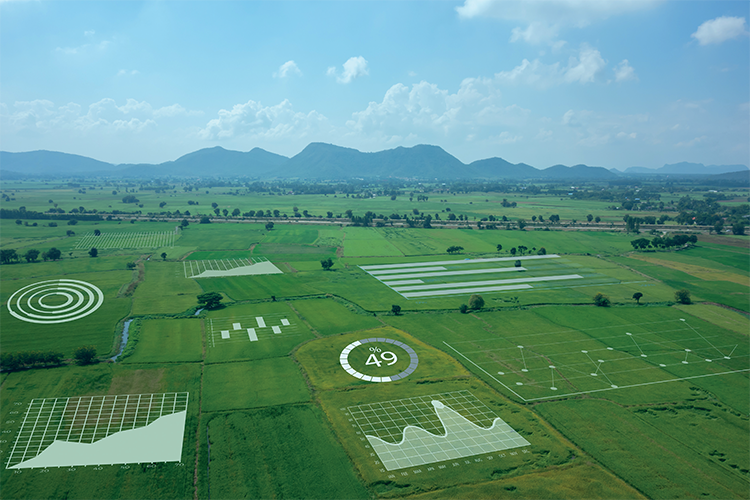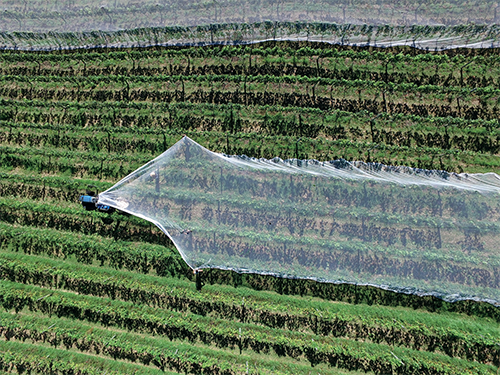
Could robotic farmers feed the world?
Alphabet, Google’s parent company, recently unveiled an innovative scheme to develop an automated farming robot. These bots are being created by the X development subsidiary, which investigates so called ‘moon shot’ technologies that could change the world if realized.
These robotic farmers are termed ‘plant buggies’, but X has overlooked the perfect name for them in its rapid development. These autonomous farming robots should be called Growbots, surely?
Blooming algae
The importance of agriculture can hardly be overstated. All of our food starts in the ground and, seeing as Star Trek style matter replicators are still a while off, that’s the way it’s going to stay for the foreseeable future.
This fact combines with an ever-climbing world population and the increasingly serious effects of climate change to put extreme pressure on agriculture to meet demand. Intensive farming is extensive, quickly depleting the soil of nutrients. This has caused the use of fertilizers, pesticides and antimicrobial chemicals to skyrocket as farmers work to get the most out of every acre.
This practice brings along its own crop of problems, such as pests evolving resistances to pesticides when they’re overused, but one of the most acutely damaging is agricultural runoff. When the fields treated with these chemicals experience rain, a significant portion of the chemicals are swept away into streams and rivers, to eventually collect in lakes, swamps and the sea.
These chemicals are environmentally damaging in their own right, but they also highly enrich the water with nutrients, known as eutrophication. This leads to vast algal blooms that quickly strip the water of dissolved oxygen as well as forming a thick, opaque layer of algae, killing any aquatic respiring and photosynthesizing life respectively.
Robotic eyes on ears of corn
The first Mineral plant buggy prototype was little more than a pair of bicycles welded together with some smartphones pointed towards the ground. But, even that rough and ready prototype showed the capabilities of the scheme as it traversed a strawberry field, collecting images of every plant it travelled over.
 More recent prototypes are significantly higher tech, with GPS location to map out and log the plant’s location in the field and advanced machine vision sensors feeding visual data into sophisticated machine learning algorithms, conditioning the software to be able to spot the difference between suffering and successful plants.
More recent prototypes are significantly higher tech, with GPS location to map out and log the plant’s location in the field and advanced machine vision sensors feeding visual data into sophisticated machine learning algorithms, conditioning the software to be able to spot the difference between suffering and successful plants.
With a little more development, these clever devices could potentially provide an ideal answer to the problem of agricultural runoff. By combining the data on plant growth patterns with soil pH, hygrometer readings and other external data, the buggy could act as the lynchpin for fully automated, individual plant-specific fertilization and watering. The buggies could also be trained to look for common pests and diseases, and similarly apply pesticides directly only to plants that need it.
When compared to the comparatively unsubtle sprayed and spread fertilization, pest control and watering techniques commonly used today, this would save an incredible amount of fertilizer and water. Plus, every kilo of fertilizer kept from the field is one kilo fewer of fertilizer eutrophicating our waterways.
In-field breakdown recovery
These plant buggies have a lot of potential, but as with most things in engineering, every silver lining has a cloud.
Putting all that responsibility for actuating watering, fertilization and pest control into one high-tech device opens up the door for serious crop losses should a breakdown occur. Every hour waiting for a replacement part is an hour more for plants to dry up or be decimated by pests. Smaller farms have it even worse, as they are likely to be remotely located and will operate a smaller number of plant buggies.
This is a perfect storm of supply chain distress. A small number of parts needs to be delivered to a remote location, as soon as possible. Here at EU Automation, that’s our entire business. When working with us, new, refurbished and obsolete parts can be delivered to you in 24 hours anywhere in Europe, and 72 hours worldwide.
EU Automation
Neil Ballinger is head of EMEA at industrial parts supplier EU Automation. EU Automation stocks and sells new, used, refurbished and obsolete industrial automation spares. Its global network of preferred partner warehouses, and wholly owned distribution centres, enables it to offer a unique service within the automation industry, spanning the entire globe. It provides worldwide express delivery on all products meaning it can supply any part, to any destination, at very short notice.
For further information, please visit: www.euautomation.com